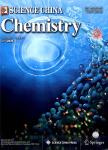Visible-light-driven external-photocatalyst-free alkylative carboxylation of alkenes with CO_(2)
Visible-light-driven external-photocatalyst-free alkylative carboxylation of alkenes with CO2作者机构:Urumqi Key Laboratory of Green Catalysis and Synthesis TechnologyKey Laboratory of Energy Materials ChemistryMinistry of EducationKey Laboratory of Advanced Functional MaterialsAutonomous RegionCollege of ChemistryXinjiang UniversityUrumqi 830046China Key Laboratory of Green Chemistry&Technology of Ministry of EducationCollege of ChemistrySichuan UniversityChengdu 610064China
出 版 物:《Science China Chemistry》 (中国科学(化学英文版))
年 卷 期:2021年第64卷第7期
页 面:1164-1169页
核心收录:
学科分类:083002[工学-环境工程] 0830[工学-环境科学与工程(可授工学、理学、农学学位)] 081705[工学-工业催化] 08[工学] 0817[工学-化学工程与技术] 080502[工学-材料学] 0805[工学-材料科学与工程(可授工学、理学学位)] 0703[理学-化学]
基 金:supported by the National Natural Science Foundation of China(21822108,21772129) the Fok Ying Tung Education Foundation(161013) Sichuan Science and Technology Program(20CXTD0112) Fundamental Research Funds for the Central Universities
主 题:carbon dioxide external-photocatalyst-free visible light alkylative carboxylation alkene
摘 要:Herein,we report a novel protocol for visible-light-driven alkylative carboxylation of alkenes with CO_(2) in the absence of external *** the irradiation of visible light,a variety of 4-alkyl-1,4-dihydropyridines(alkyl-DHPs)serve as not only alkyl radical precursors but also photoexcited reductants probably with the potential to reduce benzyl *** styrenes and acrylates are applicable in this reaction to give structurally diverse carboxylic acids in good to excellent *** reactions feature mild reaction conditions(1 atm of CO_(2),room temperature,visible light,photocatalyst-and transition metalfree),good functional group tolerance,easy scalability,as well as high regio-,and *** investigations provide evidence that alkyl radical,benzyl radical and carbanion might be involved in this reaction,providing a novel strategy for CO_(2) utilization.



